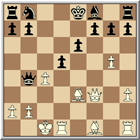White's idea of 8.g4! allowed white to avoid protecting his pawn. This way he was free to place the bishop on d2, which is a better square. These gambit lines are as sound as they are fun. This line is a huge improvement over the old 8.Be3. Now things get wild!
9.Be3 Qd6
9...Qd8 10.g5 Nd5 (10...Nfd7 11.0-0-0 Qa5 12.Nb5 e6 transposes) 11.0-0-0 e6 12.Nxd5 [12.Bb5!?] 12...cxd5 13.Bb5+ Nc6 14.Rhf1 Qc7 15.c4 0-0-0 16.Bxc6 Qxc6 17.Kb1+/=
9...Qb4 10.0-0-0 e6 (10...Nbd7 11.g5 Ne5 12.Qg3 Nfd7 13.Rd4 Qa5 14.Bf4 f6 15.h4) 11.g5 Nd5 (11...Nfd7 12.Nb5 Qa5 13.Bd4=) 12.Nxd5 cxd5 13.c4!=]

13...dxc4?? 14.Bg2 Nc6 15.Qxc6+!! The position after 13.c4 is very tricky for black because white wins a pawn back and his king is safe after Kb1.
10.Rd1!? Qb4 11.g5 Nfd7 [11...Nd5 12.a3->] 12.a3 Qxb2 13.Nb5 Qe5 [13...Na6 14.Bc4 Ne5 15.Qf5 e6 16.Bxe6 Bb4+ (16...Be7 17.Bd7+ Nxd7 (17...Kf8 18.Bd4 Qxb5 19.Bxe5+/=) 18.Qxd7+ Kf8 19.0-0 Qxb5 (19...Qe5 20.Nd6 Qxe3+ 21.Kh1 Nc5 22.Rxf7+ Kg8 23.Qxe7 Qxh3+ 24.Kg1 Qg3+ 25.Kf1 Qh3+ 26.Kf2+-) 20.Qe6 Bf6 21.Rxf6 gxf6 22.Qxf6+-) 17.axb4 Qxb4+ 18.c3 Qxb5 19.Bxf7+ Nxf7 20.Qe6+ Kf8 21.Rd7 Qb1+ 22.Ke2 Qc2+ (22...Qg6 23.Qxg6 hxg6 24.Rf1+/-) 23.Bd2 Qg6 24.Rxf7+ Qxf7 25.Rf1+/-] 14.Be2 Na6 15.0-0~~ This is unclear












